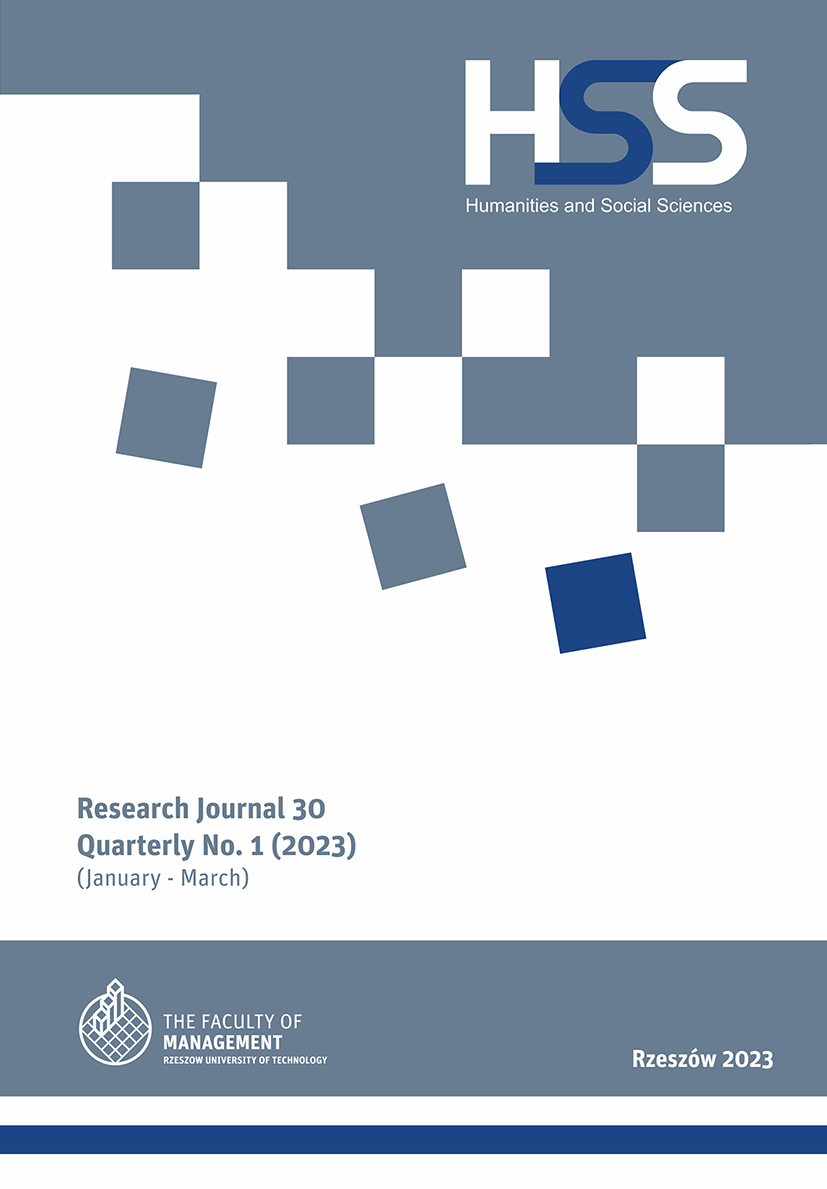Abstract
Improving product quality is still a challenge; therefore, this article aims to propose an approach to predict customer satisfaction. We implemented the following techniques: the SMART(-ER) method, brainstorming (BM), a Likert-scale survey, the Pareto rule, the WSM method, and the Naive Bayes Classifier. Customer expectations were obtained as part of the survey research. Based on these, we determined customers’ satisfaction with the current quality of the criteria and the weights of these criteria. We then applied the Pareto rule, the WSM method, and the Naive Bayes Classifier. In the proposed approach, it was predicted that current product quality is not very satisfactory to customers; that conditioned the need for improvement actions. The originality of the study is the ability to predict customer satisfaction while taking into account the weights of this criterion. The proposed approach can be used for any product.
References
Abdulkerim, I., Avvari, M., Cherkos, T. (2019). Design of house of quality using SERVQUAL and QFD for service quality improvement: a case of Bahir Dar city hotels. “International Journal of Applied Management Science”, Vol. 11, No. 3. DOI: 10.1504/IJAMS.2019.100996
Abellán, J., Castellano, J.G. (2017). Improving the Naive Bayes Classifier via a Quick Variable Selection Method Using Maximum of Entropy. “Entropy”, Vol. 19, No. 247. DOI: 10.3390/e19060247.
Altuntas, S., Özsoy, E.B., Mor, Ş. (2019). Innovative new product development: A case study. “Procedia Computer Science”, Vol. 158. DOI: 10.1016/j.procs.2019.09.044
Dincer, H., Yuksel, S., Marinez, L. (2021). House of Quality-Based Analysis of New Service Development Using Context Free Grammar Evaluation-Enhanced Fuzzy Hybrid Modelling. “IEEE Access”, Vol. 9. DOI: 10.1109/ACCESS.2021.3117796.
Erdil, N., Arani, O. (2018). Quality function deployment: more than a design tool. “International Journal of Quality and Service Sciences”. DOI: 10.1108/IJQSS-02-2018-0008.
Giemza, M. (2006). Wymiary satysfakcji klienta [In:] Sikora T., red., Klient w organizacji zarządzanej przez jakość. Kraków: AE w Krakowie.
Hauser, J. (1993). How Puritan-Bennet Used the House of Quality. “Sloan Management Review”, Vol. 34, No. 3.
Hie, J., Qin, Q., Jiang, M. (2020). Multiobjective Decision-Making for Technical Characteristics Selection in a House of Quality. “Mathematical Problems in Engineering”, No. 9243142. DOI: 10.1155/2020/9243142.
Hoła, A., Sawicki, M., Szóstak M. (2018). Methodology of Classifying the Causes of Occupational Accidents Involving Construction Scaffolding Using Pareto-Lorenz Analysis. “Appl. Sci.”, Vol. 8, No. 1:48. DOI: 10.3390/app8010048.
Keshavarz-Ghorabaee, M. (2021), Assessment of distribution center locations using a multi-expert subjective–objective decision-making approach. “Sci Rep”, No. 11, 19461. DOI: 10.1038/s41598-021-98698-y.
Kumar, R., Dubey, R., Singh, S., Singh, S., Prakash, C., Nirsanametla, Y., Królczyk, G., Chudy, R. (2021). Multiple-Criteria Decision-Making and Sensitivity Analysis for Selection of Materials for Knee Implant Femoral Component. “Materials”, Vol. 14, 2084. DOI: 10.3390/ma14082084.
Kurniawan, V., Wijayanti, D. (2020). A House of Quality (HOQ) matrix of assistive technology for deaf students at elementary school to enhance basic-level language competencies. “J. Phys.” Conf. Ser. 1456 012040.
Lawlor, K., Hornyak, M. (2012). Smart Goals: How The Application Of Smart Goals Can Contribute To Achievement Of Student Learning Outcomes, “Developments in Business Simulation and Experiential Learning”, Vol. 39.
Li, B., Li, H. (2019). Prediction of Tunnel Face Stability Using a Naive Bayes Classifier. “Appl. Sci.”, Vol. 9, No. 4139. DOI: 10.3390/app9194139.
Miao, Y., Liu, Y., Chen, Y. (2015). Determination of Target Values of Engineering Characteristics in QFD Using Uncertain Programming. “Journal of Uncertainty Analysis and Applications”, Vol. 3, 16. DOI: 10.1186/s40467-015-0040-x.
Moradi, M., Raissi, S. (2015). A Quality Function Deployment Based Approach in Service Quality Analysis to Improve Customer Satisfaction. ”International Journal of Applied Operational Research”, Vol. 5, No. 1.
Muttaqi’in, N., Katias, P. (2021). Strategies to Improve Service Quality With House of Quality at Hotel X Surabaya. “Business and Finance Journal”, Vol. 6, No. 1. DOI: 10.33086/bfj.v6i1.1979.
Pacana, A., Siwiec, D. (2021). Universal Model to Support the Quality Improvement of Industrial Products. “Materials”, No. 14, 7872. DOI: 10.3390/ma14247872
Piątkowski, J.P. (2014), Modele inteligencji obliczeniowej dla zadań klasyfikacji danych: metody Bayesowskie, Toruń: Uniwersytet Mikołaja Kopernika, Wydział Fizyki, Astronomii i Informatyki Stosowanej.
Putman, V., Paulus, P. (2011). Brainstorming, Brainstorming Rules and Decision Making. “Journal of Creative Bahavior”, Vol. 43, No. 1. DOI: 10.1002/j.2162-6057.2009.tb01304.x.
Ruiz-Vanoye, J. et al. (2013). Quality Function Deployment (QFD) House of Quality for Strategic Planning of Computer Security of SMEs. “International Journal of Combinatorial Optimization Problems and Informatics”, Vol. 4, No. 1.
Shrivastava, P. (2013). House of Quality: An Effective Approach to Achieve Customer Satisfaction & Business Growth in Industries. “International Journal of Science and Research”, Vol. 5, No. 9.
Siwiec, D., Pacana, A. (2021). A Pro-Environmental Method of Sample Size Determination to Predict the Quality Level of Products Considering Current Customers’ Expectations. “Sustainability”, No. 13, 5542. DOI: 10.3390/su13105542.
—— (2021). Model of Choice Photovoltaic Panels Considering Customers’ Expectations. “Energies”, Vol. 14, 5977. DOI: 10.3390/en14185977.
—— (2021). Model of Choice Photovoltaic Panels Considering Customers’ Expectations. “Energies”, No. 14, 5977. DOI: 10.3390/en14185977.
—— (2021). Model Supporting Development Decisions by Considering Qualitative–Envi-ronmental Aspects. “Sustainability”, No. 13, 9067. DOI: 10.3390/su13169067.
Temponi, C., Yen, J., Tiao, A. (1999). House of Quality: A fuzzy logic-based requirements analysis. “European Journal of Operational Research”, Vol. 117, No. 2. DOI: 10.1016/S0377-2217(98)00275-6.
Trovato, G., Chrupała, G., Takanishi, A. (2016). Application of the Naive Bayes Classifier for Representation and Use of Heterogeneous and Incomplete Knowledge in Social Robotics. “Robotics”, Vol. 5, No. 6. DOI: 10.3390/robotics5010006.
Wu, H.H., Shieh, J.I. (2006). Using a Markov chain model in quality function deployment to analyse customer requirements. “International Journal Of Advanced Manufacturing Technology”, Vol. 30, No. 1–2. DOI: 10.1007/s00170-005-0023-z.


